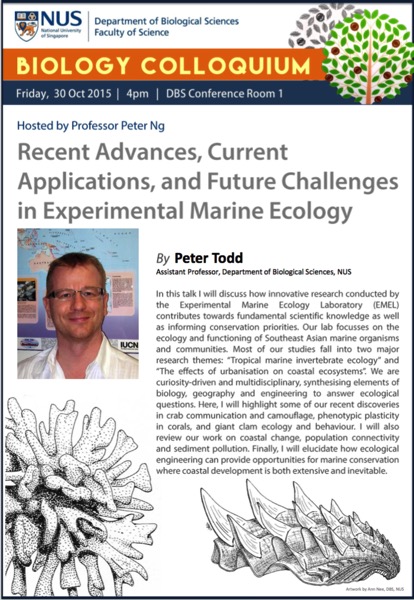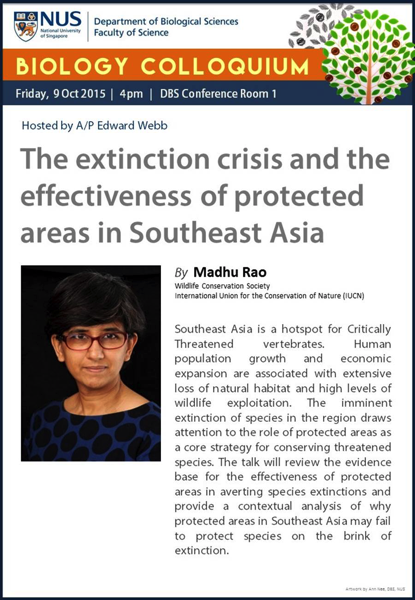Research Assistant or Associate: Land use change and conservation in Myanmar
Department of Biological Sciences, National University of Singapore
Period of position: 3 years total (renewable contracts)
Salary: Commensurate with experience
Project description:
The NUS Department of Biological Sciences, in collaboration with the Wildlife Conservation Society, is conducting a multi-disciplinary research programme on forest and land cover change in Myanmar. The research seeks to understand the drivers of deforestation and the dynamics of the agriculture-forest interface within the changing policy and economic context of Myanmar. The research will utilize a wide range of qualitative and quantitative methods intended to yield relevant, scientifically credible information that will directly support policy recommendations to reconcile Myanmar’s forthcoming economic development with the conservation of habitat and biodiversity.
Position description:
We seek a talented and highly motivated early-career scientist to join our team as a research assistant/associate. The researcher will play an integral role in all aspects of the project, with particular emphasis on quantitative modeling. This project will adopt an interdisciplinary approach, so the researcher will need to have some familiarity working across disciplines. Specific duties of this position include facilitating consensus building exercises (horizon scanning); assisting in the design and implementation of social surveys; coding and executing quantitative models that may be systems dynamics, economic, or agent-based in nature; statistical analyses and consolidating data; and contributing to the writing of research reports for publication. The researcher will also assist with overall project management, including mentoring undergraduate researchers.
Qualifications:
Applicants should have a BSc or MSc in Life Sciences, Environmental Science, Biology, Economics, Geography or other relevant to the position. Applicants with a BSc should have at least two years of relevant experience. Knowledge domains should include some of the following: land use change, deforestation, industrial agricultural expansion, conservation biology, rural development, and environmental policy, especially pertaining to SE Asia. Field experience in tropical Asia would be useful.
Other required experience:
Computer programming (R, C++, or equivalent) along with an ability to develop simulation and statistical models. Experience with spatially-explicit modeling and geographic information systems (GIS) would be beneficial.
A track record of publishing, or a strong desire to publish peer-reviewed scientific articles.
How to apply:
Interested applicants should email Dr. Edward Webb at ted.webb@nus.edu.sg. Please include a brief cover letter explaining your experience, a cv, relevant peer-reviewed publications, and the names and contact information of two referees.
Applications will be reviewed until a suitable candidate is found.





